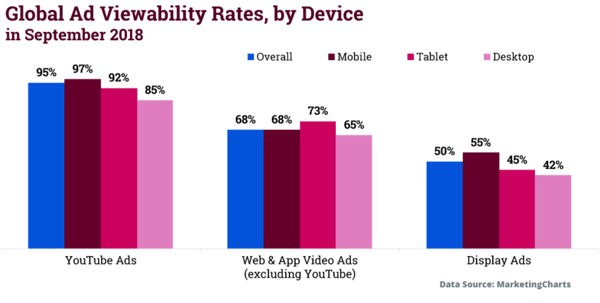In the world of advertising, ad-buying is just part of the job.
Advertisers usually buy traffic through multiple publishers, and at some point, it becomes extremely difficult to manage all the traffic sources. How can advertisers avoid the headache of tracking multiple channels at once? By using ad servers.
Ad servers are the perfect ad management platforms for programmatic advertising. There are countless benefits of advertising with an ad server.
What are the benefits of using an ad server?
- Host all of your media campaigns in one account
- Enhanced targeting options for campaigns
- Manage your ad budget in one central location
- Centralize your ad-buying, tracking, and performance metrics in one place
With a decent ad server, advertisers who manage ads with huge amounts of traffic can track their advertising campaigns across multiple screens and store the aggregated information of their performance all in one place.
Any advertiser who deals with multiple ad networks, publishers and dozens of other platforms, should consider how an ad server can help optimize their campaigns. In this article, you’ll discover how to use an ad server in your programmatic advertising campaigns so you can create your own in-house programmatic ad buying strategy.
Let’s go through the five key benefits of an ad server for advertisers.
5 benefits of using an ad server
With programmatic technology scaling up in second half of 2019, advertisers are going the extra mile to walk users through the entire purchase funnel. This article will show you five major benefits of ad server that will help you scale up your advertising in 2019.
1. Constant ad campaign optimization
The performance of every programmatic ad campaign is measured in conversions. The ability to track the targeted actions of the users for further performance optimization can tremendously improve the efficiency of the media buying process.
For an advertiser, it’s crucial to know exactly where their best-performing audience is, as they would put more marketing budget into these sources rather than spending money on an audience that would never convert.
Keep things on an even keel by controlling all advertising stages and make sure you get what you paid for. The best part of all is that in most ad servers, performance optimization in the vast majority of ad servers is done automatically.
2. Real-time analytics
Real-time analytics in an ad server is vital when you deal with dozens or even hundreds of ad campaigns. In this rapidly changing digital world, advertisers should make decisions immediately after the user has engaged with their ad.
Ad Servers help to track and measure ad performance by collecting data regarding ad serving activity: browser, OS, referrer, screen size, mobile carrier, time zone, location, etc.In your ad server account, you can now see every conversion in real-time.
Why real-time stats are so important? Analytics provides you a 360-degree view on your ad campaign and helps you to maintain better control over the three major advertising concerns: ad fraud, brand safety, and visibility:
Ad fraud
Fraud can affect even both world-known sites and premium publisher properties. Seventy-seven percent of marketing leaders are concerned about ad fraud for a reason: brands lose at least $20 billion annually because of ad fraud.
Ad servers usually partner with fraud protection companies and have built-in fraud detection tools so you can detect fraud with the naked eye. When you see 2,000,000 impressions and zero conversions in your ad campaign, it’s a red flag which may need further examination.
Brand safety
The delivery of ads in any format – rich media, display, video should be matched with the relevant website content. Brand safety is a major concern for brands and advertisers: 63% of advertisers are now struggling to control their ad exposure to ad fraud and dodgy content.
Viewability
Viewability shows the percentage of ads seen by a user. A valid impression must be shown at least 50% on screen for minimum one second. Ad viewability is highly affected by creative type, size, and page design. If you see 1000 ad impressions, 500 of which are counted as viewable, the viewability rate of the website would be 50%.
Here's how to calculate your own viewability rate:
Viewability rate = viewable impressions/ overall ad impressions x 100%
Wondering how your viewability rate measures up to the average? Here are the average global ad viewability rates:

3. Timely performance reports
Every data-driven decision should be based on large-scale campaign performance data.
Real-time reports can save your budgets on third-party market research and make you independent from publisher stats, in which you can't control or eliminate certain traffic resources immediately. In your ad server account, getting customized reports with the metrics that matter to your company will help you re-shape your ad strategies and optimize your efforts for maximum yield.
Ad servers generate timely reports across multiple advertising segments and keep them all in one place to give you a complete view of your ad performance. In your ad serving account, you can apply special filters to run reports on specific parameters, cookies, time zones, referral domains, or packages. You can also schedule reports and receive timely updates on key information about your advertising.
4. Conversion tracking
Conversion tracking in an ad server account shows advertisers how many views or clicks result in a sign-up/registration, actual purchase, lead, viewing of a certain page, or some other valuable actions.
|
Ad Servers use several methods to track conversions:
- Pixel Tracking using Actions and placing an invisible pixel on the specific page(s) of your web site (most commonly, on the Thank You pages)
- Behavioral Tracking is used to track previous user activity (content viewed, search history, etc.) to create a segment, which can be used to match ad creatives to this specific user.
- Server-to-Server tracking (Postback tracking) is a great alternative to Pixel Tracking and can be used when a pixel can’t be placed due to technical reasons (i.e. an app download)
- Tracking Revenue helps advertisers define exact publisher's site where he made this purchase.
|
5. Retargeting
Only 2% of users convert during the first visit to an online store. The main goal of retargeting campaigns is to make the other 98% come back at the stage they left by showing them custom ads with the item they interacted with. Retargeting can help you keep your brand in front of those users who left your website without a purchase.
Retargeting is must-feature for e-commerce companies and brands that sell goods online. With the help of an ad server, advertisers can gather and segment audiences for building smarter communication strategies with every customer.
Ad servers then allow them to hit audiences with specific ads and get people back right at the stage where they left (to the website, cart or payment page). This strategy allows advertisers to avoid wasting budget on ads and get straight to the point.
Find the right ad server for your needs
When your programmatic advertising budgets and channels grow, it's becoming more vital to keep an eye on your outcome. Ad server software will help you keep your online advertising under control and turn it into a cost-effective tool that drives higher quality sales and leads.
|
Ready to add ad server software to your advertising strategy? Find the best ad server software on the market according to G2 users!

|
 by Priya Khaira-Hanks
by Priya Khaira-Hanks
 by Anna Pozniak
by Anna Pozniak
 by Sagar Joshi
by Sagar Joshi